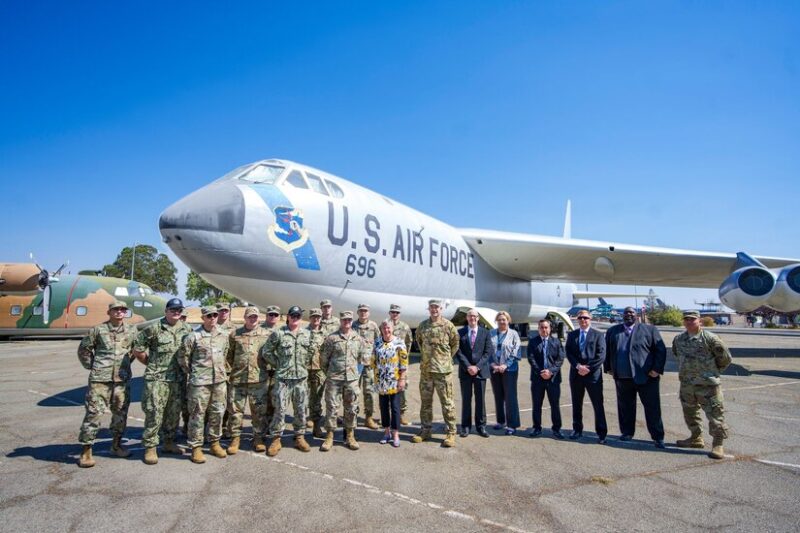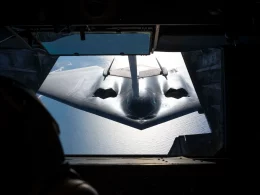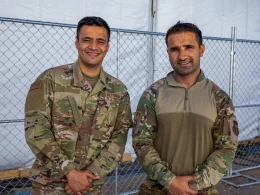TRAVIS AIR FORCE BASE, Calif. – “When you’re talking about tracking another nation’s nuclear capabilities, you can’t really talk about a margin of error because it doesn’t exist.”
Col. William McNicol, the Defense Threat Reduction Agency department director for nuclear inspections related to the New Strategic Arms Reduction Treaty, or New START, knows exactly how important his job is, but nevertheless upholds the mechanisms to keep him and his team sharp.
“We conduct exercises regularly to ensure that when we conduct inspections, our team knows what to look for and where to look for them,” he said. “Mission failure to us means there are nuclear capabilities held by our foreign counterparts that are unaccounted for, so the need to keep our counts accurate and comprehensive is of the utmost importance to ensure national security.”
The DTRA office at Travis Air Force Base, California, is responsible both for helping keep inventory of Russian nuclear arms and facilitating their Russian counterparts in keeping inventory of the U.S.’ per the New-START Treaty, an agreement reached between the U.S. and Russia to limit the number of both nation’s deployed strategic warheads to 1,550 and delivery platforms to 700.
Warheads deployed on inter-continental ballistic missiles, submarine-launched ballistic missiles and deployed heavy bombers equipped for nuclear armaments all count towards the number of warheads allowed to each nation, said McNicol.
One of the key elements to ensuring the treaty’s verification regime is effective is the conducting of on-site inspections, a way for the DTRA team and their Russian counterparts to put their eyes on the other nation’s inventory. Each nation is allowed 18 inspections per year as part of New Start’s provisions.
“In addition to on-site inspections, we also keep in constant contact with our counterparts to stay aloft of any developments we need to be aware of, exchanging 2,000 to 3,000 e-mails every year,” McNicol said. “Keeping up a robust correspondence and a free exchange of data are just a couple of the confidence-boosting measures we employ. Much of the treaty’s ongoing success comes down to the trust built between us and Russia, so when the data we have matches what we see in our inspections, it helps to keep wrinkles from forming.”
To help overcome the language barrier between the two nations, DTRA also keeps a team of interpreters on staff, each having undergone a rigorous hiring process and training curriculum to be certified for the agency’s mission.
“Our interpreters are some of the best in the world,” McNicol said. “When the conversation is something as important as enforcing New START, it’s a bad time for something to be misconstrued. Luckily, we have them right by our side to keep our conversations progressing smoothly and accurately.”
After the Intermediate-Range Nuclear Forces Treaty expired in August 2019, New START stands as the sole nonproliferation treaty between the U.S. and Russia, serving as a last levee against unabated nuclear arms manufacturing as well as a testament to both nation’s commitment to maintaining security and stability in the world.
After U.S. President Joe Biden and Russian President Vladimir Putin agreed to extend the treaty in February of this year, both heads of state underscored the importance of the treaty, with both the White House and the Kremlin citing the agreement as instrumental in the mutual limitation of nuclear missile arsenals.
In a speech at Travis AFB on Sept. 24, Rose Gottemoeller, Deputy Secretary General of NATO and one of the original architects of the New START treaty, echoed the President’s words in addition to lauding the continued efforts of the base’s DTRA office.
“As important as this treaty itself is in maintaining global security, it’s because of this team’s technical expertise that it truly has legs to stand on,” Gottemoeller said. “You all have and continue to ensure the treaty’s compliance, and I thank each and every one of you for it.”
The New START Treaty extension lasts until 2026, during which negotiations are underway to create an updated agreement.
To learn more about the DTRA and its mission, visit www.dtra.mil.










